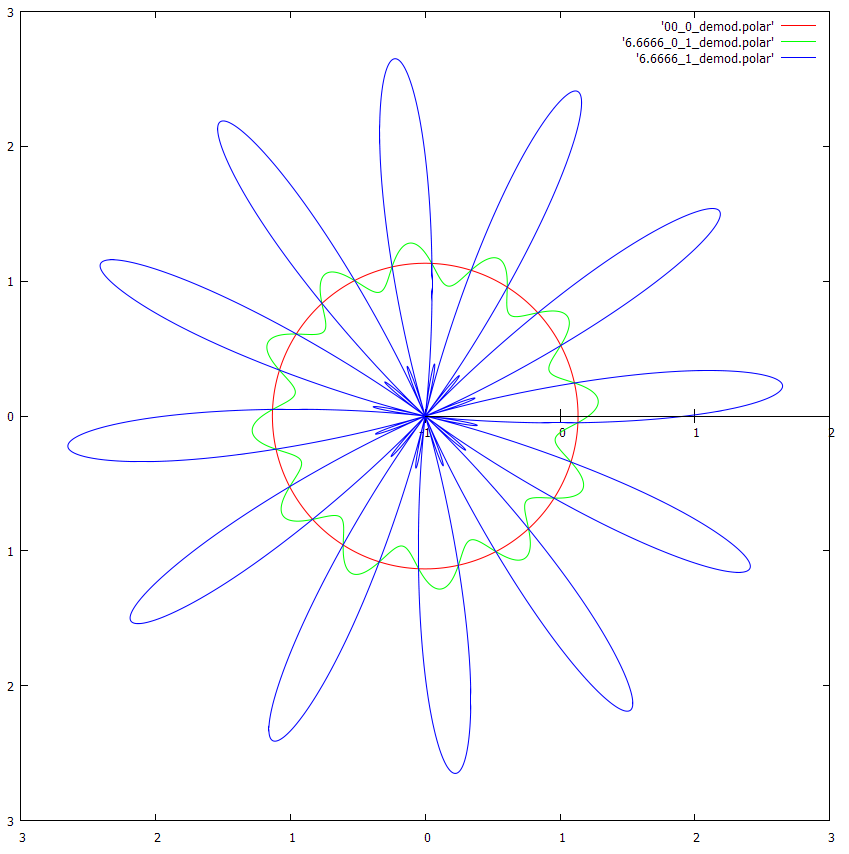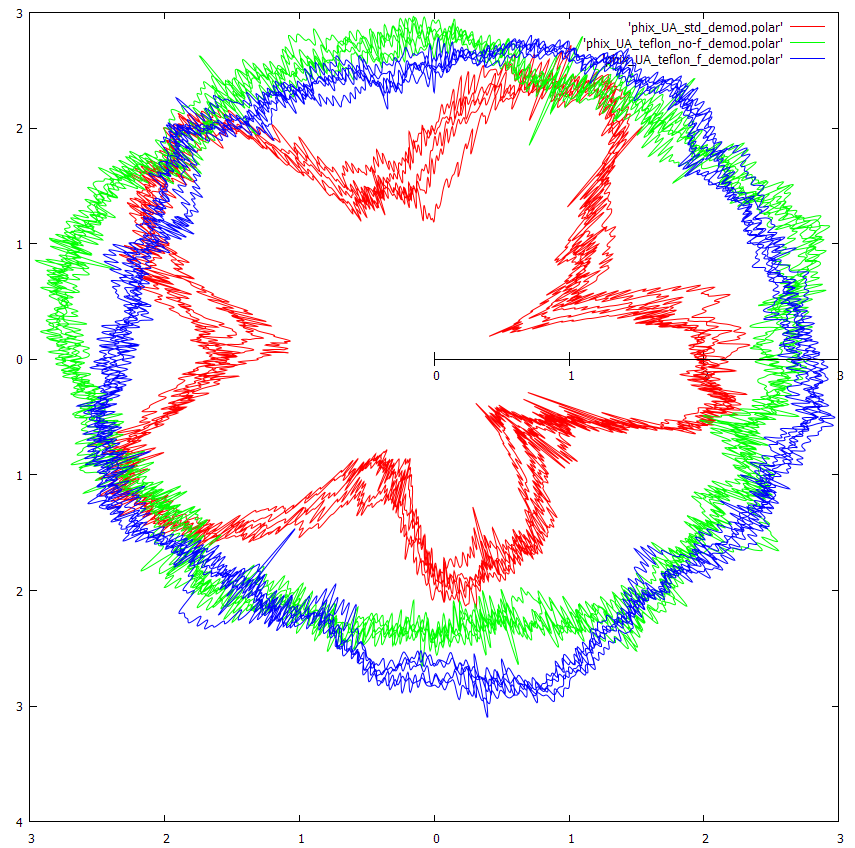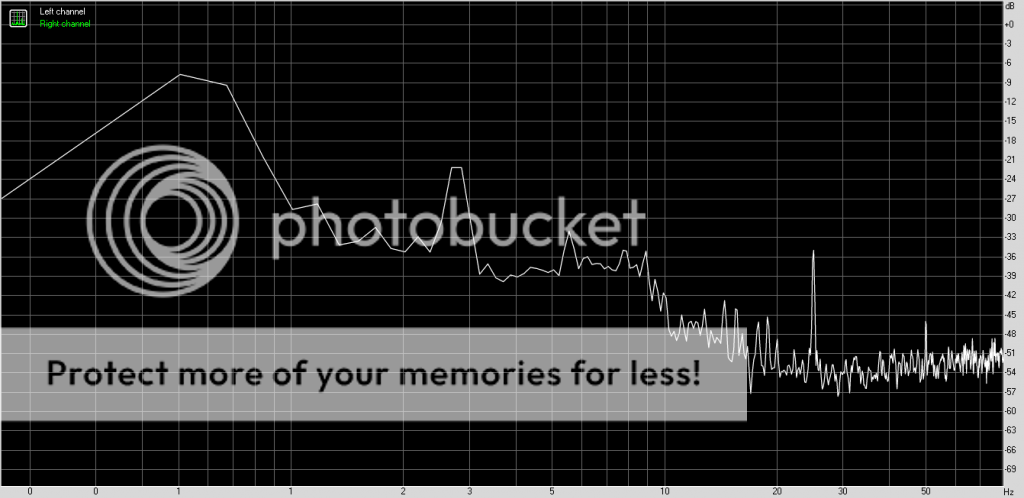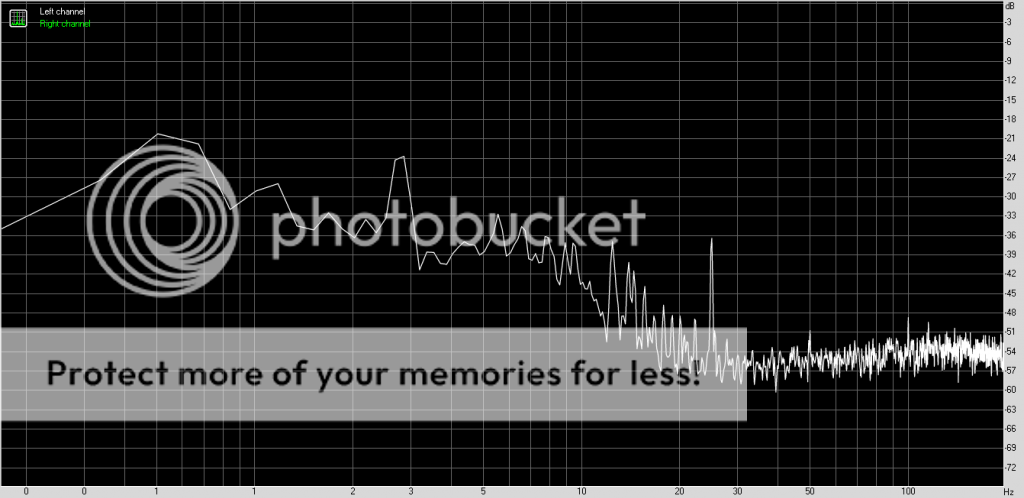You are using an out of date browser. It may not display this or other websites correctly.
You should upgrade or use an alternative browser.
You should upgrade or use an alternative browser.
Turntable speed analysis part II
- Thread starter flavio81
- Start date
phixphi
pfm Member
Ed, Im thoroughly confused now This is as round as Monica Belluci's brest. Which file is that? #1) from my post #360? Then this is teflon washer + fridge switched on. Why is it different from your earlier polar plots in #368?
This is as round as Monica Belluci's brest. Which file is that? #1) from my post #360? Then this is teflon washer + fridge switched on. Why is it different from your earlier polar plots in #368?
Again, the description of the files from my post #360: THe deck sitting on it's frame, no console
1) Teflon washer, nearby fridge switched on
2) Teflon washer, the fridge switched off (to minimize any external vibrations)
3) Standard 930, no teflon washer, fridge undecided (I forgot if it was on or off)
Sorry for the mess, but I forgot about that f...ng fridge, which might have influenced the naked deck.
Again, the description of the files from my post #360: THe deck sitting on it's frame, no console
1) Teflon washer, nearby fridge switched on
2) Teflon washer, the fridge switched off (to minimize any external vibrations)
3) Standard 930, no teflon washer, fridge undecided (I forgot if it was on or off)
Sorry for the mess, but I forgot about that f...ng fridge, which might have influenced the naked deck.
phixphi
pfm Member
Ok, Ed, thanks. The main variable change between these files is a presence/absence of the console. EMT930 is quite sensitive to that (I judged it by ear and using a silent track).
The 5.5Hz is very beliveable--the 2nd harmonic of the idler fundamental. Most probably it was passed to the cart via both the platter AND via the chassis, hitting the arm's base. If I make any changes to the washer, I'll try to record the test tone with no washer but in the console to see if we reproduce the above result. from #381.
The 5.5Hz is very beliveable--the 2nd harmonic of the idler fundamental. Most probably it was passed to the cart via both the platter AND via the chassis, hitting the arm's base. If I make any changes to the washer, I'll try to record the test tone with no washer but in the console to see if we reproduce the above result. from #381.
edd9000
pfm Member
I calibrated my results using the extreme wobble as a guide, bad idea, no wonder the bix looks so good!
I will will run them through again with a different scale to get a better look at them.
Here is a shot from audacity showing the demodulated waveform:
The bix, then the teflon washer result, then the standard one from 360. Note the bix and the standard result have had thier gain increased by about 15db to match that of other.

Clearly the bix isnt as good as it looked. Its not far off in maximum deviation from the teflon result. Platter speed shows a speed variation of +-0.02-0.03% on the bix once eccentricity is filtered out.
I think that goes to show how sensitive this way of looking at wow and flutter is, the bix is certinaly listanable. But im not very pitch sensitive.
I will will run them through again with a different scale to get a better look at them.
Here is a shot from audacity showing the demodulated waveform:
The bix, then the teflon washer result, then the standard one from 360. Note the bix and the standard result have had thier gain increased by about 15db to match that of other.

Clearly the bix isnt as good as it looked. Its not far off in maximum deviation from the teflon result. Platter speed shows a speed variation of +-0.02-0.03% on the bix once eccentricity is filtered out.
I think that goes to show how sensitive this way of looking at wow and flutter is, the bix is certinaly listanable. But im not very pitch sensitive.
phixphi
pfm Member
Ed, this looks closer to what Paul has got me used to.
But I must say I like more your initial "no prisoners"
error amplification (your post 368). I understand that you've changed demod
amplification?
If you listen to my std. tone from #360 the wobbling is very clearly audible. It should
be represented like that in the plots as well: clearly visible
I also very much agree with how Paul has been presenting the results: both demod spectrum and the polar plot,
very useful!
I'm quite curious how the Paul's plots of these files will look like too.
But I must say I like more your initial "no prisoners"
error amplification (your post 368). I understand that you've changed demod
amplification?
If you listen to my std. tone from #360 the wobbling is very clearly audible. It should
be represented like that in the plots as well: clearly visible
I also very much agree with how Paul has been presenting the results: both demod spectrum and the polar plot,
very useful!
I'm quite curious how the Paul's plots of these files will look like too.
edd9000
pfm Member
I have increased the amplification. The jaggy plot from post 368 wouldn't fit on this scale.
The audible wobble tends to be eccentricity, which is filtered out by the high pass filter on the results. If it was shown, it would just make all the results egg shaped.
I will post some examples later.
The audible wobble tends to be eccentricity, which is filtered out by the high pass filter on the results. If it was shown, it would just make all the results egg shaped.
I will post some examples later.
phixphi
pfm Member
Ok, now I get it, thank you Ed! This file was posted in 334 not 360, that's why I got confused.
Ed, can I ask you the last favour? Could you please post the spectra (with some good resolution) of my both files
you've just polar plotted? I'd like to see again what peak gets attenuated.
In the meantime I've fitted again the second arm-cart: 3012R with FR7F this time
and I hear absolutely no tik-tacking sound...which started this round of my deck analysis.
Ed, can I ask you the last favour? Could you please post the spectra (with some good resolution) of my both files
you've just polar plotted? I'd like to see again what peak gets attenuated.
In the meantime I've fitted again the second arm-cart: 3012R with FR7F this time
and I hear absolutely no tik-tacking sound...which started this round of my deck analysis.
edd9000
pfm Member
Ok, I see where the confusion is. What I have been labeling as the file from post 360, was from 334. Oh dear.
Anyway. Lets go step by step by step with the Teflon washer file from 360. I have upped the sensitivity again.
Here is the wow and flutter file after coming out of spectrum lab:

I then filterout everything over 200hz to clean it up and make plotting easier:

Now I then alter then usualy filter out everything below 1hz and export to make the polar plot.
Here is the polar without removing the content below 1hz:

And then filtered:

As you can see it really just changes the shape a little.
For comparison here is the really jaggy file, now I think i was having a sampling rate issue in spectrum lab, i went though all the files again and made sure to start at 44100, this seems to have halved the rate of the jaggies and put it back at the 2.7hz.


Anyway. Lets go step by step by step with the Teflon washer file from 360. I have upped the sensitivity again.
Here is the wow and flutter file after coming out of spectrum lab:

I then filterout everything over 200hz to clean it up and make plotting easier:

Now I then alter then usualy filter out everything below 1hz and export to make the polar plot.
Here is the polar without removing the content below 1hz:

And then filtered:

As you can see it really just changes the shape a little.
For comparison here is the really jaggy file, now I think i was having a sampling rate issue in spectrum lab, i went though all the files again and made sure to start at 44100, this seems to have halved the rate of the jaggies and put it back at the 2.7hz.


Dave Cawley
Registered User
edd9000
pfm Member
Oh I forgot about those! thanks.
phixphi
pfm Member
Ed, heroic work you are doing!
Ok, here the pentagonal shape is very clear. This is the 2.72Hz idler
fundamental (it takes 5 idler rotations per one platter rotation).
And then filtered:

Ok, here the pentagonal shape is very clear. This is the 2.72Hz idler
fundamental (it takes 5 idler rotations per one platter rotation).
Spectrum from 334:
http://img.photobucket.com/albums/v2...ps02f02753.png[IMG]
Spectrum from the teflon washer:
[IMG]http://img.photobucket.com/albums/v2...ps64254c9e.png[IMG]
[/QUOTE]
Here the change is not so big indeed. The 2.72Hz is there as this is probably idler surface/eccentricity. Teflon washer seemingly increased the errors in the 10-20Hz range but the comaprison is not fair as the deck is in two different conditions: with and without the console. The motor 25Hz is very clear...strange as the phases are aligned under load to less than 1VAC.
I started listening with the second arm-cart (3012R+FR7f) and I could hear
no tik-ticking, but I think FR7f is less sensitive than Decca Jubilee, which peaked the tik-tik-tik (I judge it by how I hear the motor when I engage the 930's subplatter break).
Since there is a bit of a mess with one parameter: the console, in the next days I'll try to take new tests with/without the washer, but with the deck in the console.
Paul R
pfm Member
There's something not quite right with my stuff, I'm wondering if it is phix's use of 22050Hz sampling and some assumption I've made.
This is the polar collection of DC's calibration files,

And on the same basis this is the three phix files,

The spectra of the demodulated signals,

The significant bumps are at 0.55Hz, 1.1Hz, 2.77Hz, 5.55Hz, 8.32Hz, 11.1Hz and obviously 25Hz. The first two are eccentricity related.
Paul
This is the polar collection of DC's calibration files,

And on the same basis this is the three phix files,

The spectra of the demodulated signals,

The significant bumps are at 0.55Hz, 1.1Hz, 2.77Hz, 5.55Hz, 8.32Hz, 11.1Hz and obviously 25Hz. The first two are eccentricity related.
Paul







